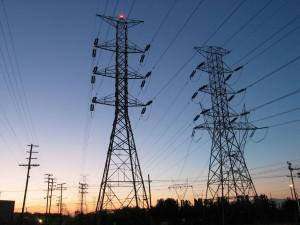 A recent study by the Massachusetts Institute for Technology (MIT) looked at what it deemed as “One of the most important emerging challenges facing the grid . . . the need to incorporate more renewable generation in response to policy initiatives at both state and federal levels.” At issue is the intermittent nature of many renewables, namely wind and solar. Despite being two of the most talked about renewable sources of energy, they produce meager amounts of energy and do not provide a constant supply of electricity, especially in comparison to hydroelectric and biomass.
A recent study by the Massachusetts Institute for Technology (MIT) looked at what it deemed as “One of the most important emerging challenges facing the grid . . . the need to incorporate more renewable generation in response to policy initiatives at both state and federal levels.” At issue is the intermittent nature of many renewables, namely wind and solar. Despite being two of the most talked about renewable sources of energy, they produce meager amounts of energy and do not provide a constant supply of electricity, especially in comparison to hydroelectric and biomass.
This report represents the fifth such study in the MIT Energy Initiative’s Future series. It “aims to provide a comprehensive, objective portrait of the U.S. electric grid and the identification and analysis of areas in which intelligent policy changes, focused research, and data development and sharing can contribute to meeting the challenges the grid is facing.” Because the grid must provide the necessary amount of power required by users at all times, the fluctuation in production that is inherent in solar and wind can cause an imbalance. Too little electricity leads to a blackout (rolling or otherwise).
If wind and solar are to replace coal and nuclear as viable sources of electricity, the study points out that they may well rely on centralized locations (think giant wind farms in the Dakotas, once hailed as the Saudi Arabia of wind). Delivering the electricity from these locations to urban populations centers will require extending transmission wires well beyond the current reach of the grid. The same issue comes about in the southwest where large concentrated solar power installations are underway.
Among the major points in the research are the need for implementation of technology to better detect ebbs and flows of demand, as well as smart grid options to help monitor usage. One X-factor will be the adoption of electric vehicles. These cars may help by storing electricity in their batteries and acting like decentralized power plants by feeding the electricity back onto the grid (if the cars are plugged in) or they may pull more power from it, which could “increase the ratio of peak to average demand and thus further reduce capacity utilization and raise rates.”
The following bullet points represent the summary recommendations from the study:
- To facilitate the integration of remote renewables, the Federal Energy Regulatory Commission should be granted enhanced authority to site major transmission facilities that cross state lines.
- To cope more effectively with increasing cybersecurity threats, a single federal agency should be given responsibility for cybersecuity preparedness, response, and recovery across the entire electric power sector, including both bulk power and distribution systems.
- To improve the grid’s efficiency and lower rates, utilities with advanced metering technology should begin a transition to pricing regimes in which customers pay rates that reflect the time-varying costs of supplying power.
- To improve utilities’ and their customers’ incentives related to distributed generation and energy conservation, utilities should recover fixed network costs through customer charges that do not vary with the volume of electricity consumption.
- To make effective use of new technologies, the electric power industry should fund increased research and development in several key areas, including computational tools for bulk power system operation, methods for wide-area transmission planning, procedures for response to and recovery from cyberattacks, and models of consumer response to real-time pricing.
- To improve decision making in an increasingly complex and dynamic environment, more detailed data should be compiled and shared, including information on the bulk power system, comprehensive results from “smart grid” demonstration projects, and standardized metrics of utility cost and performance.
[Image source]



COMMENTS ( 1 )
posted on 14 December at 10:21
Hi there, I wish for to subscribe for this webpage to obtain latest updates, so where can i do it please assist.